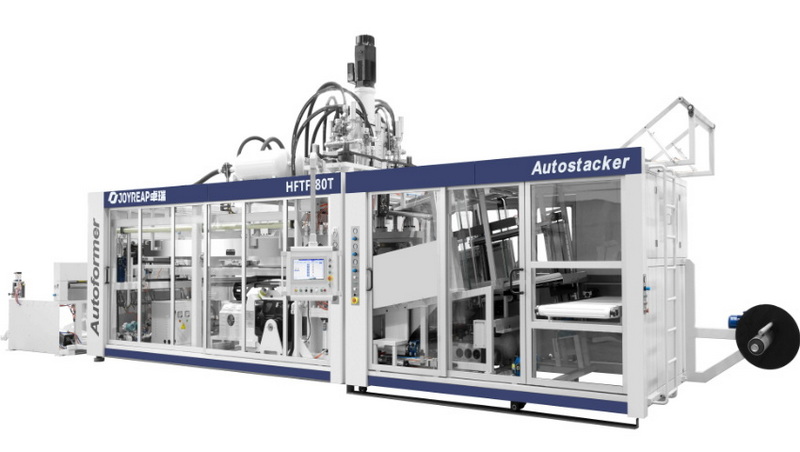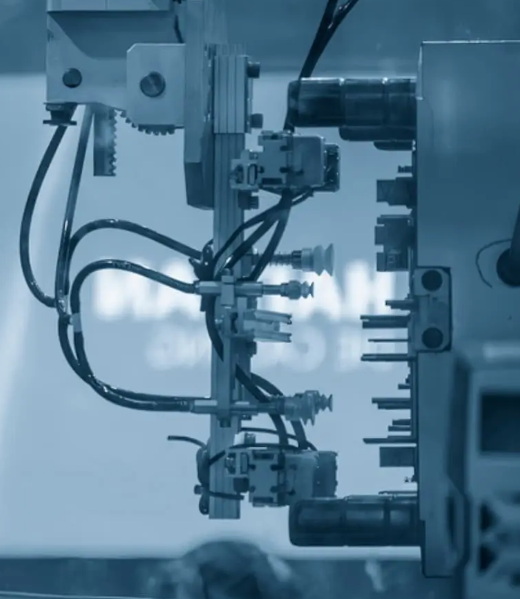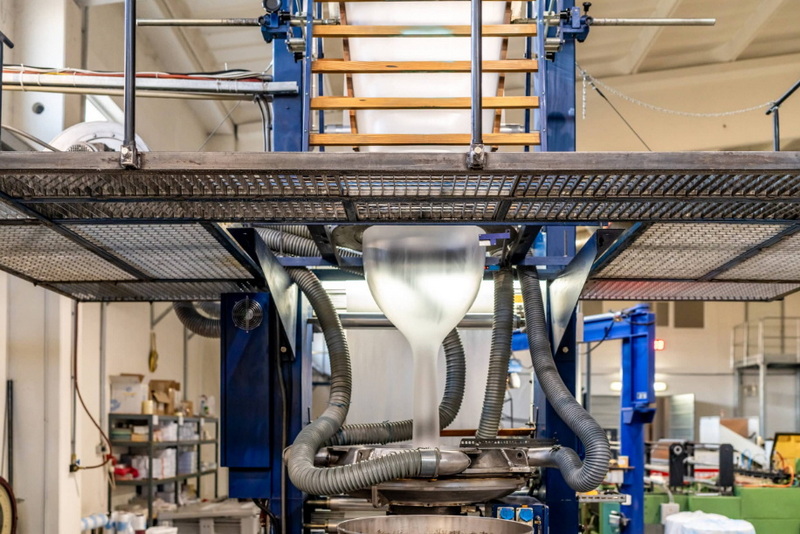Content Menu
● Overview of Insulation Pipe Extrusion
● Key Trends in Insulation Pipe Extrusion Technology
>> 1. Advanced Insulation Pipe Extrusion Machinery
>> 2. Multi-Layer Co-Extrusion Innovations
>> 3. Sustainable Material Adoption
>> 4. Energy-Efficient Cooling Systems
>> 5. Foam Core and Hybrid Designs
● Applications Driving Market Growth
>> 1. District Heating and Cooling Networks
>> 2. Oil & Gas Infrastructure
>> 3. Construction and Utilities
>> 4. Emerging Sectors
● Regional Market Insights
● Conclusion
● FAQ Section
>> 1. What distinguishes modern insulation pipe extrusion machinery?
>> 2. Why is co-extrusion preferred over mono-extrusion?
>> 3. How does IPC technology improve cooling efficiency?
>> 4. Which regions dominate insulation pipe production?
>> 5. What sustainable materials are gaining traction?
● Citations:
The insulation pipe extrusion industry has undergone transformative advancements, driven by demands for energy efficiency, sustainability, and high-performance infrastructure. This article explores cutting-edge machinery, materials, and applications shaping the sector, supported by market insights and technological innovations.

Overview of Insulation Pipe Extrusion
Insulation pipe extrusion involves creating pipes with layered thermal barriers to minimize heat transfer in applications like district heating, oil and gas transport, and building utilities. Modern techniques utilize materials such as polyethylene (PE), polyurethane foam, aerogels, and EVOH composites, enabling pipes to withstand extreme temperatures and corrosive environments. The global market for multilayer plastic pipe extrusion lines is projected to grow at a CAGR of X% (2025–2033), driven by infrastructure modernization and sustainability mandates[1][5].
Key Trends in Insulation Pipe Extrusion Technology
1. Advanced Insulation Pipe Extrusion Machinery
Innovations in machinery design are revolutionizing production efficiency:
- JWELL's High-Efficiency Lines: Features include servo-driven extruders with Siemens PLC processors for ±0.5°C temperature precision and modular vacuum tanks for rapid maintenance. Their PE insulation pipe lines support diameters up to 2 meters, meeting demand for large-scale infrastructure projects[6].
- KraussMaffei's IPC Technology: Internal pipe cooling (IPC) systems reduce cooling zone length by 40% and boost productivity by 60% through simultaneous air-and-water cooling, ideal for thick-walled pipes[4].
- Automated Co-Extrusion Systems: Integrate IoT and AI for real-time adjustments, reducing waste by 15–20%[1][2].
Technical Specifications of JWELL Lines
| Model | Extruder Configuration | Pipe Diameter (mm) |
| JWGB630 | JWS75/38 + JWS90/33 | 200–630 |
| JWGB2000 | JWS120/38 + JWS150/33 | 1054–1960 |
| Source: JWELL Machinery Co., Ltd.6 |
|
|
2. Multi-Layer Co-Extrusion Innovations
Co-extrusion dominates the market (60% share) due to its ability to combine materials like PE, EVOH, and polyurethane into functional layers:
- Gas Barrier Pipes: PE-EVOH structures reduce oxygen permeability by 95%, critical for food packaging and chemical transport[7].
- Recycled Material Integration: Up to 30% recycled PVC or PE is incorporated into outer layers without compromising durability[2][3].
3. Sustainable Material Adoption
Eco-friendly alternatives are displacing traditional insulation materials:
- Aerogels: Achieve thermal conductivity as low as 0.015 W/m·K, ideal for high-temperature pipelines[3].
- Bio-Based Polyurethane: Reduces carbon footprint by 40% compared to petroleum-based variants[5].
- Recycled Polymers: Post-industrial PE waste is reprocessed into insulation jackets, aligning with EU circular economy goals[1][6].
4. Energy-Efficient Cooling Systems
Cooling advancements optimize production speed and resource use:
- Vacuum Calibration Tanks: Ensure dimensional accuracy within 0.1% tolerance for SDR 26 pipes[4].
- Closed-Loop Water Recycling: Cuts water consumption by 50% in JWELL's systems[6].
5. Foam Core and Hybrid Designs
- Polyurethane Foam Cores: Provide thermal resistance of 0.023–0.025 W/m·K while reducing pipe weight by 30%[5].
- 3D-Printed Insulation Layers: Enable complex geometries for HVAC systems, minimizing installation gaps[2].

Applications Driving Market Growth
1. District Heating and Cooling Networks
Pre-insulated pipes dominate this sector (45% market share), with polyurethane foam cores reducing heat loss to <2% in Nordic district heating projects[5]. KraussMaffei's IPC technology is widely adopted here for its rapid cooling capabilities[4].
2. Oil & Gas Infrastructure
Insulated pipes prevent wax deposition in subsea pipelines, with JWELL's 2-meter lines servicing offshore projects like Brazil's Mero oil field[5][6].
3. Construction and Utilities
- HVAC Systems: PE-EVOH pipes prevent condensation in chilled water networks[7].
- Underground Cable Conduits: Multi-layer designs with fire-retardant additives meet EU EN 13501-1 standards[1].
4. Emerging Sectors
- Hydrogen Transport: High-barrier EVOH layers prevent H₂ permeation, a focus for EU's Hydrogen Backbone[7].
- Pharmaceutical Grade Pipes: Co-extruded PE-EVOH lines meet FDA compliance for sterile fluid transfer[7].
Regional Market Insights
- Asia-Pacific (45% Market Share): China's “Sponge City” initiative drives demand for 1.4 million km of insulated drainage pipes by 2030[1].
- Europe (30% Share): Strict EN 253 standards accelerate adoption of automated extrusion lines[4][5].
- North America: Shale gas projects utilize insulated pipes for CO₂ injection wells, with a $5.94 billion market growth projected by 2029[5].
Conclusion
The insulation pipe extrusion sector is advancing through automation (IoT-enabled machinery), material innovation (aerogels, recycled polymers), and application-specific designs (hydrogen-ready pipes). With Asia-Pacific leading market growth and sustainability mandates reshaping material choices, manufacturers like JWELL and KraussMaffei are pivotal in driving efficiency. Future trends will likely focus on AI-driven predictive maintenance and bio-based insulation materials to meet net-zero targets.

FAQ Section
1. What distinguishes modern insulation pipe extrusion machinery?
Advanced lines feature servo-driven extruders, Siemens PLC controls, and IoT integration for real-time adjustments. JWELL's systems achieve ±0.5°C temperature precision[6][2].
2. Why is co-extrusion preferred over mono-extrusion?
Co-extrusion allows multi-material layering (e.g., PE-EVOH) for enhanced gas barriers and chemical resistance, capturing 60% of the extrusion line market[1][7].
3. How does IPC technology improve cooling efficiency?
KraussMaffei's internal pipe cooling uses air-water synergy to reduce cooling zone length by 40%, slashing energy use by 25%[4].
4. Which regions dominate insulation pipe production?
Asia-Pacific leads with 45% market share due to China's infrastructure boom, while Europe excels in automated, high-precision systems[1][5].
5. What sustainable materials are gaining traction?
Aerogels (0.015 W/m·K conductivity) and 30% recycled PE blends reduce environmental impact without compromising performance[3][6].
Citations:
[1] https://www.datainsightsmarket.com/reports/multilayer-plastic-pipe-extrusion-line-57668
[2] https://jieyatwinscrew.com/blog/pvc-extruder-machine-everything-you-need-to-know/
[3] https://www.gminsights.com/industry-analysis/pipe-insulation-market
[4] https://press.kraussmaffei.com/Downloadportal/public-brochures/Brochures/Brochures/03%20Technologies%20%20Series/04%20EXT%20-%20Extrusion%20Technology/01%20Technologies/Pipe%20Extrusion/EXT_BR_Rohrextrusionsanlagen_en_view.pdf
[5] https://www.prnewswire.com/news-releases/pre-insulated-pipes-market-to-grow-by-usd-5-94-billion-from-2025-2029--fueled-by-district-heating-and-cooling-systems-ai-driven-market-transformation---technavio-302362899.html
[6] https://www.jwellmachine.com/pe-insulation-pipe-extrusion-line/
[7] https://www.jwellextrusions.com/video/jwell-pe-evoh-insulation-pipe-extrusion-line.html
[8] https://www.extrusion-info.com/upload/magazines/extr_int/1-2025/files/assets/common/downloads/Extrusion%20International%201-2025.pdf
[9] https://www.globenewswire.com/news-release/2025/02/10/3023724/28124/en/Thermal-Insulation-Global-Outlook-Report-2025-Growing-Demand-for-Lithium-Ion-Battery-Drives-Opportunities-for-Thermal-Insulation-Materials-A-99-6-Billion-Market-by-2030.html
[10] https://pmarketresearch.com/product/worldwide-pre-insulated-pipes-market-research-2024-by-type-application-participants-and-countries-forecast-to-2030/
[11] https://www.globenewswire.com/news-release/2025/02/05/3021359/0/en/Plastic-Extrusion-Machine-Market-to-Grow-at-4-7-CAGR-During-2025-2035-Boosting-Global-Industry-to-USD-12-343-2-Million-by-2035-Future-Market-Insights-Inc.html
[12] https://www.plasticsnews.com/news/extruder-builders-hope-rebound-orders-continues-through-2025
[13] https://www.coherentmarketinsights.com/industry-reports/insulation-market
[14] https://www.ptonline.com/articles/get-ready-to-be-blown-away-with-new-extrusion-technology
[15] https://www.globenewswire.com/news-release/2024/08/07/2925863/0/en/Rising-Adoption-of-Insulation-in-the-Construction-Industry-to-Surge-Industrial-Insulation-Market-at-5-CAGR-by-2034-Future-Market-Insights-Inc.html
[16] https://www.thebusinessresearchcompany.com/report/insulation-products-global-market-report
[17] https://www.linkedin.com/pulse/pre-insulated-pipe-systems-market-size-2025-2034-forecast-bagwan-wkxcf
[18] https://www.futuremarketinsights.com/reports/pipe-insulation-products-market
[19] https://www.thebusinessresearchcompany.com/report/flexible-pipe-global-market-report
[20] https://www.jwellextrusions.com/revolutionizing-the-pipe-industry.html






















